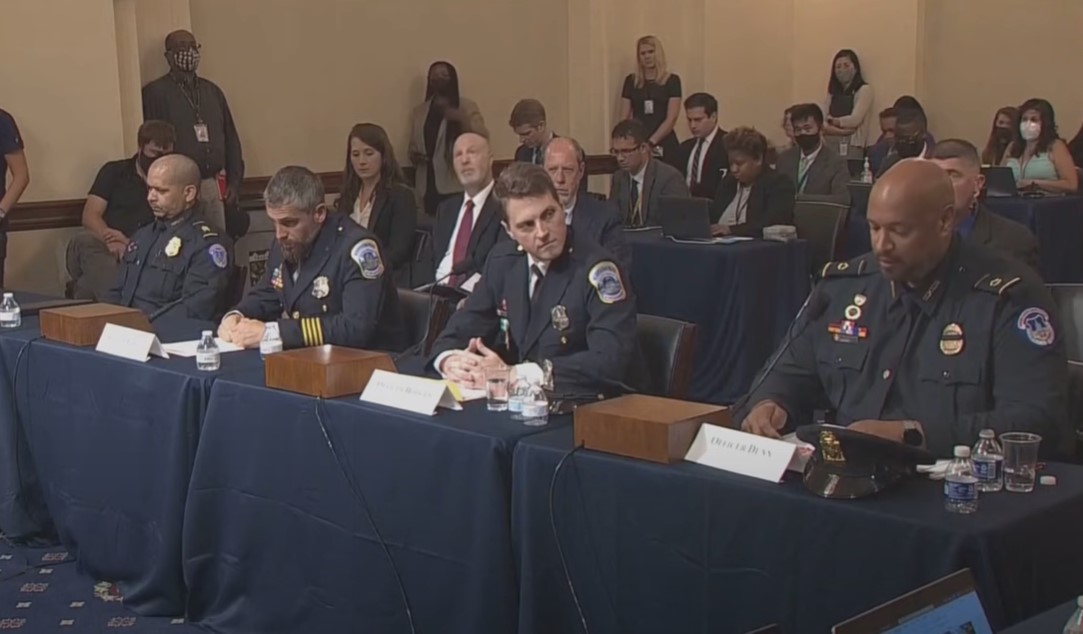

In a new development in the ongoing battle for transparency surrounding the Government’s unprecedented lawfare against January 6 defendants, J6er Ryan Zink and his attorney, Roger Roots, have filed an opposition (Document 155, filed April 21, 2025) to the government’s attempt to conceal critical evidence from the public.
This filing, submitted in the U.S. District Court for the District of Columbia, follows Zink’s recent victory in lifting a protective order on January 6 discovery materials and the government’s subsequent push to reverse that decision. The latest filing reveals a previously unreleased document, marked “highly sensitive” by the government, which lists the injuries reported by Metropolitan Police Department (MPD) officers on January 6.
The document shatters the government’s narrative of a violent “insurrection,” exposing it as a deliberate lie designed to smear President Donald Trump and interfere in the 2024 election.
The “highly sensitive” document, included as part of Zink and Roots’ filing, details that only 56 MPD officers reported injuries related to the January 6 protest.
Far from the catastrophic “attack” on law enforcement peddled by the Department of Justice (DOJ), the injuries listed are often trivial, with many described simply as “pain” in various parts of the body. Examples include a “laceration to the pinky finger,” and nebulous, nondescriptive reports of “back pain” and “head pain.”
Only 18 officers were treated at a hospital, with just one—Officer Michael Fanone—remaining admitted for what the government has exaggerated as “serious injuries.” Notably, the filing highlights that Fanone’s own bodycam footage contradicts his claims of suffering a heart attack or traumatic brain injury, showing him stating he was “O.K.” and engaging in lighthearted conversations with colleagues.

Even more striking, the filing reveals that while only 56 officers reported injuries, approximately 180 MPD members reported using force against protesters.
This means that for every officer claiming an injury, three officers reported that they used force on January 6 protesters. Meanwhile, nearly 1,600 January 6 defendants have been arrested, prosecuted, and, in many cases, imprisoned, with plans to target another 1,000 had President Trump not intervened. This document definitively shows that the vast majority of J6ers were peaceful protestors who did not attack officers.
The government systematically exaggerated police “injuries” from January 6 in order to perpetuate its “violent insurrection” narrative. Most injuries were in the nature of pain, a handful of bruises, some sprained ankles, or mild cuts. Metro PD’s list of 56 injured officers contained just one broken bone (a compound fracture of a finger).
The document’s designation as “highly sensitive” raises serious questions about the government’s motives. Who decided to classify this list of minor injuries as top secret? What criteria were used to justify hiding it from the public? And, most critically, what else is buried in the over 8 million files that comprise the January 6 discovery?
The government’s push to keep these materials under wraps is led by Assistant U.S. Attorney Jennifer Blackwell, who is now urging Judge James E. Boasberg to reverse his order lifting the protective order. Zink and Roots argue that Blackwell’s efforts are part of a broader campaign to shield the DOJ’s misconduct from public scrutiny. The filing accuses the government of exaggerating claims about “national security” and “privacy rights” to justify concealing evidence that debunks its narrative.
For example, the government has claimed that the discovery contains sensitive information about “hundreds of witnesses and victims,” yet Roots counters that the materials contain “almost no privileged or confidential information, and absolutely no details or identifying information about informants.”
The filing also highlights specific instances of government deception. In addition to Fanone’s exaggerated claims, it points to Officer Daniel Hodges, who falsely stated he never swung his baton at protesters, despite bodycam footage showing him violently engaging nonviolent demonstrators.
The government’s false claims regarding Metro Officer Daniel Hodges are also belied by Officer Hodges’ own bodycam footage. Officer Hodges claimed at the sentencing of Patrick Montgomery, for example, that Hodges never swung his baton at anyone on January 6. However, Hodges’ own bodycam footage shows Hodges and other cops violently wading into a crowd of nonviolent protestors while punching, pushing, and swinging a police baton offensively. This footage shows J6 defendant Patrick Montgomery (and other brave J6ers) trying to stop the crazed, out-of-control Hodges, by grabbing Hodges’ baton.
Similarly, the government smeared Trump supporter Rosanne Boyland, claiming she died of a drug overdose, when bodycam footage reveals she died amid violent abuse and neglect by MPD officers. These examples, Roots argues, underscore the public’s right to access the January 6 discovery to expose the DOJ’s pattern of lies.
The public has obviously been misled and confused by the government’s claims. And the public has a right to view the actual evidence from January 6 so that the record of history of January 6 may be clarified.
Zink and Roots’ filing challenges the very foundation of the protective order, noting that the circumstances justifying it four years ago no longer exist. The government itself has released detailed video simulations of the Capitol and hundreds of hours of footage during January 6 trials, rendering claims of “national security” absurd. With millions of visitors touring the Capitol annually and its layout widely known, the idea that surveillance camera locations or other discovery materials pose a security threat is, in Roots’ words, “preposterous.”
The public’s demand for truth is clear.
A 2024 Newsweek poll cited in the filing found that 52% of Americans believe the full truth about January 6 has not been shared, compared to just 29% who think it has. By fighting to keep the discovery hidden, Blackwell and the DOJ are obstructing the public’s First Amendment right to scrutinize the government’s actions in what has become one of the most controversial prosecutions in U.S. history.
Zink and Roots’ latest filing is a call for accountability and demands answers: Why is the government so desperate to hide a document listing minor injuries like a cut pinky finger? What other revelations lie within the January 6 discovery that the DOJ fears the public will see?
As Roots concludes, “The government’s untimely motion should be denied, and the truth about January 6 must be fully exposed.” This fight for transparency is not just about Zink’s case—it’s about restoring trust in a justice system that has been weaponized against American citizens.
The post Previously Unreleased Document Exposes Government’s False Insurrection Narrative: Only 56 Officers Reported Minor Injuries on January 6 appeared first on The Gateway Pundit.

